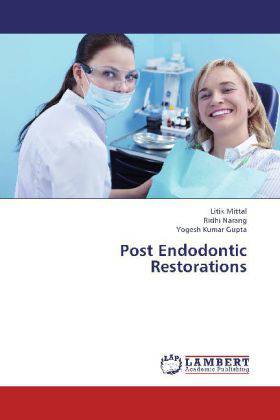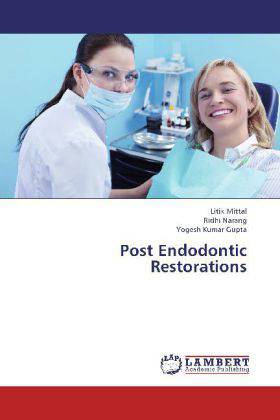
Je cadeautjes zeker op tijd in huis hebben voor de feestdagen? Kom langs in onze winkels en vind het perfecte geschenk!
- Afhalen na 1 uur in een winkel met voorraad
- Gratis thuislevering in België vanaf € 30
- Ruim aanbod met 7 miljoen producten
Je cadeautjes zeker op tijd in huis hebben voor de feestdagen? Kom langs in onze winkels en vind het perfecte geschenk!
- Afhalen na 1 uur in een winkel met voorraad
- Gratis thuislevering in België vanaf € 30
- Ruim aanbod met 7 miljoen producten
Zoeken
€ 63,45
+ 126 punten
Omschrijving
When faced with the challenge of restoring an endodontically treated tooth, the dentist must decide, first, whether the post is required and second, the type of restoration that is indicated. Earlier a post was thought to strengthen the root of an endodontically treated tooth. But it is widely held today that the primary purpose of post placement is to retain the core buildup material or to reinforce the remaining coronal tooth structure. It is difficult to discuss the longevity of teeth restored by a post because there are many variables to control. The long term clinical success of an endodontically treated tooth is dependent on many factors. The successful treatment of a badly broken down tooth with pulpal disease depends not only on good endodontic therapy, but also on good prosthetic reconstruction of the tooth after endodontic therapy is completed. The decision to place a post is based on several parameters. These include the position of the tooth in the arch, occlusion, function of the restored tooth, amount of remaining tooth structure and canal configuration.
Specificaties
Betrokkenen
- Auteur(s):
- Uitgeverij:
Inhoud
- Aantal bladzijden:
- 88
- Taal:
- Engels
Eigenschappen
- Productcode (EAN):
- 9783845409795
- Verschijningsdatum:
- 4/12/2012
- Uitvoering:
- Paperback
- Afmetingen:
- 150 mm x 220 mm
- Gewicht:
- 141 g

Alleen bij Standaard Boekhandel
+ 126 punten op je klantenkaart van Standaard Boekhandel
Beoordelingen
We publiceren alleen reviews die voldoen aan de voorwaarden voor reviews. Bekijk onze voorwaarden voor reviews.









